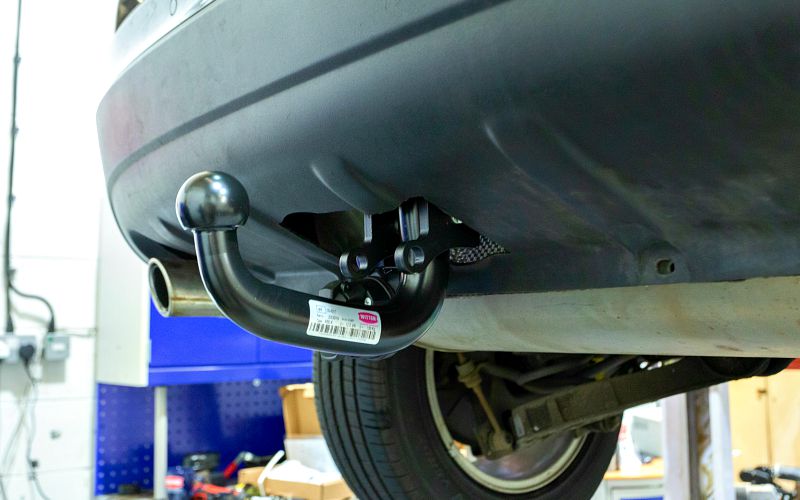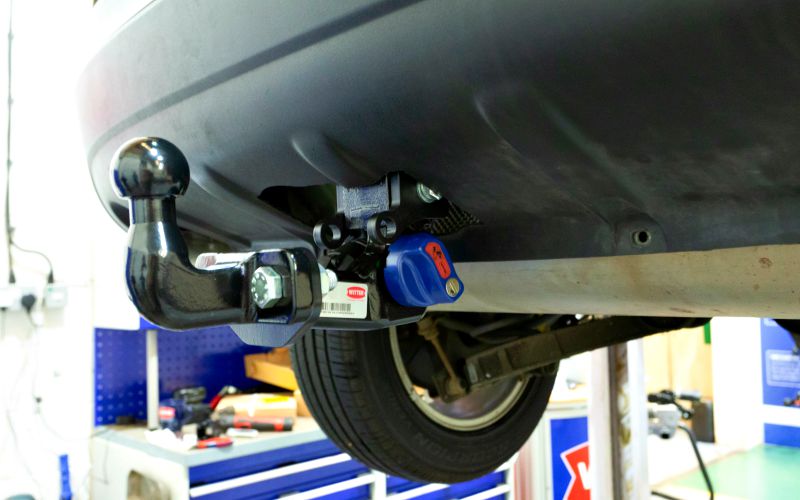Caravan tow bars 101
Caravan magazine
Caravan tow bars for Beginners
For beginners, caravan tow bars can seem a confusing area of caravan-car equipment.
What is an Alko tow bar? Can any car have a tow bar? Are there different size tow balls? What is a flange tow bar? How much does it cost to put a tow bar on a car?
These are common questions from new caravanners learning about and deciding between caravan tow bars.
Don't worry. Choosing between caravan tow bar types is straightforward, and this article will help you.
Let's start.
What is a caravan tow bar?

Here are the tow bar basics: a towbar is a connection that joins a tow-vehicle to the caravan or trailer it is towing. In its most basic form, a towbar is merely a 50mm iron ball, fixed to a towing vehicle. It is the link to which you attach a caravan hitch.
At the other end of the spectrum, an iron ball and caravan electrics link to the 'tow'. These allow the caravan and the car’s onboard computer to communicate about lights, stability, braking, parking sensors and indicators.
Tow bar types
| Tow bar type | About | Why you might choose one |
|---|---|---|
|
Fixed flange towbars |
These are permanent towbars fixed to a flange-plate on the car with two 24mm bolts. |
They tend to be cheaper than other types, but look less attractive, so your sleek, newly acquired car permanently has a protrusion sticking out at the back. The plus point is that you can easily fit a cycle carrier, fixing it between the flange and the ball. |
|
Detachable flange towbars |
Currently, Witter is the only company making these removable flange-type towballs. |
You can remove the towball when you're not using it, so it doesn't stick out. Detachable flange towbars won't trigger your reversing sensors when you're not towing. Plus, you can fit various accessories and couplings to them for different situations. |
|
Fixed swan neck towbars |
The swan neck towbar features an iron towball on the end of a long, curved steel ‘neck’ construction. They have a 'graceful' curve to them. |
Some consider it more discreet than a flange towbar as less ‘iron-work’ is on show. The neck often sweeps up from under the rear bumper, so more of the structure is hidden. Generally, fixed swan neck towbars offer plenty of bumper clearance. |
|
Detachable swan neck towbars |
Want to keep your car looking sleek when you're not towing? |
The big plus-point with a detachable swan neck tow bar is that, when you are not towing, your car looks as if there is no towbar fitted. The disadvantage is that this type is more expensive than basic flange types. |
|
Vertical or horizontal detachable towbars |
Vertical-attachment types are invisible once you remove the towball neck. |
The towball neck is inserted upwards into the towbar receptor, while the horizontal type goes in from the side. There is little to choose between the two. |
|
Electric retractable towbars |
The latest development in tow bars from Westfalia. |
You release the towbar by pressing a button inside the car, and it automatically manoeuvres itself into place. This tow bar type appeals to the aficionados of all things techy. Many top-end towcars like Range Rovers and Mercedes have retractable towbars fitted. |
| AL-KO compatible towball | AL-KO compatible towballs protrude further, giving the hitch headspace to move. | The new AL-KO stabiliser has a bulkier hitch head than other designs. It, therefore, requires more space around the towball to turn without fouling. |
What tow bar do I need?
When you have a better idea of the tow bar types, you need to choose the right tow bar for your car.
To find the right type for your car, you will find help on the manufacturer's websites.
Witter, for example, has two simple tools on their website to find suitable towbars for your car. One uses your car's registration number. If you don't have or know your complete registration number, their other tool finds the right towbars for your car using its make, model and year.
There’s not such a wide choice for every vehicle, though. But, shopping around for towbars is easy.
Essential towbar tips

Always clean your towball before attaching a tow-hitch to it. Grease, paint, rust or other contaminants on the ball will contaminate the friction pads in modern caravan stabilisers, preventing them from working correctly.
Use some emery cloth or wire wool to clean your towball back to bare metal, before attaching the stabiliser.
Check that your reversing sensors will not be affected by the new towbar before a specialist fits it. Budget towbar systems are less likely to take account of reversing sensors, which can cause problems later.
When reversing your caravan onto a pitch, remember to pull forward by about a foot before uncoupling your car and caravan. Moving forward will release any compression in the hitch head ram. Otherwise, the head may shoot forward when lifted off the towball and might damage your bumper.
Ensure that your towbar fitter is quality assured by the NTTA.
What to ask when choosing between caravan tow bars
- Flange or swan neck?
- Fixed, detachable or retractable?
- Will it fit my tow-hitch/stabiliser?
- How much does it cost?
- What type of electrical socket will they fit? Will it match my caravan?
- Where will the socket be fitted? Will it be easily accessible?
- Is there somewhere to attach the breakaway cable?
- Bypass electrics or bespoke?
- Will it require a bumper cut?
- Will my parking sensors work properly with and without a caravan behind?
- What guarantee is on offer?
- Do I need to worry about towing height?
Now you've learnt about caravan tow bars, it's time to choose the right one for you and your car. Start by looking on specialist websites, like Witter, and look around for the options.


